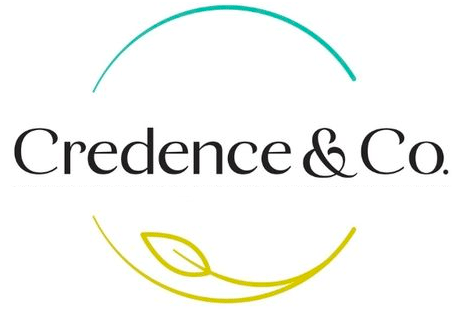I am writing this post just ahead of New Year’s Eve—when many of us think about making resolutions for the coming year. It occurs to me that organizations also make resolutions (we call it strategic planning). Strategic planning sounds loftier than resolution setting but fundamentally both exercises (setting resolutions and engaging in strategic planning) emerge as an answer to the same question: How can we strengthen ourselves and our organizations for the year(s) ahead?
It seems to me that resolution setting and strategic planning exercises can learn from one another.
Appling Strategic Planning Phases to New Year’s Resolutions
At Credence, we describe strategic planning as involving three distinct phases:
- Phase 1: Articulating or affirming the organization’s vision, mission, and values
- Phase 2: Establishing strategic priorities
- Phase 3: Creating an operational plan to animate the organization’s strategic priorities
In contrast, New Year’s resolutions often focus only on establishing a personal goal – akin to the second phase of the strategic planning exercise. People may ponder: Looking ahead to the coming year, what is most important for me to focus on? This is a great question. Unfortunately, resolutions are more often broken than kept. Why? Could our personal resolutions be helped if we incorporated Phases 1 and 3 of strategic planning into our resolution setting process?

What would change if we began the resolution setting process with Phase 1, by reminding ourselves of our central purpose and the values core to our character?
During the first phase of strategic planning for organizations, Credence asks questions like: What is our core purpose? Why do we exist? What is core to our character? As individuals, we might ask: What is my gifting? What “word” am I uniquely being asked to speak into being? What values define my character?
These questions ground us, reminding us of who we already are at the core of our being. With this foundation, discerning our focus or goal becomes an expression of the architecture of our being, rather than a revision of who we are. Of course, our goals also typically involve some change that we desire. When our goals are connected to our core purpose, however, they become easier to realize. It is as though our goals are traveling with the current of our river, not against it.
During the second phase of strategic planning with organizations, Credence asks questions like: What is most important for us to do right now and in the coming year[s]? As individuals, we might ask: Looking ahead to the coming year, what is most important for me to focus on? What am I committed to welcoming into my life? What am I committed to letting go of? Clear priorities help both organizations and individuals establish a sense of direction for the coming years. They channel one’s energy and establish a “north star” to guide one’s commitments for the coming year(s).
After establishing our goals, Phase 3 remains – this is the step most easily overlooked by organizations and individuals alike. For organizations, Credence asks questions like: How will we ensure we accomplish the priorities we have set for ourselves? How will we act on our priorities? What concrete steps will we take and how will we hold ourselves to the commitments we have made? In traditional strategic planning exercises, Phase 3 is the responsibility of the organization to complete. Increasingly, however, organizations ask for support with this phase: too many have seen great strategic priorities languish at the idea stage, never quite becoming reality.
Individuals making resolutions can learn from organizations’ experiences. We, too, want resolutions to be more than lofty goals. We, too, would like to see our goals activated, positively influencing our lives. Articulating the concrete steps we will take to animate our resolutions greatly increases the likelihood of our success.
Applying New Year’s Resolutions to Strategic Planning
What can strategic planning exercises learn from those who make yearly resolutions? In contrast to strategic planning exercises, most resolution-setting processes do not come with a three-phase approach; nor do the resolutions we establish come with a planning template. There is, however, something grander and more joyful in most resolution exercises. People establish visionary goals, announce them with flourish, and celebrate the commitments they are making. There is deep value in this yearly ritual. As the calendar turns from one year to the next, those who make resolutions look back to learn from the past just as they look forward to thoughtfully anticipate the year ahead. Making resolutions is like a yearly rite of passage, inviting us to pause, breathe, reground ourselves, and meaningfully commit to who and how we want to be in the year to come.
Imagine if organizations brought the same energy to strategic planning. While some may find strategic planning boring or unsettling, done well, strategic planning can be grand, even joyful. Like resolution setting, strategic planning is a ritual designed to thoughtfully look back and forward, establishing resolutions to guide the way ahead.
Both resolution setting and strategic planning invite us to pause, breathe, and reground ourselves. We are invited to step out of the busyness of life and work to remember who we are and out of that deep knowing, to re-establish our sense of direction – giving our personal and organizational purpose legs to run and wings to fly.
May 2024 hold many joyful moments for you – perhaps some may even be in strategic planning sessions!
